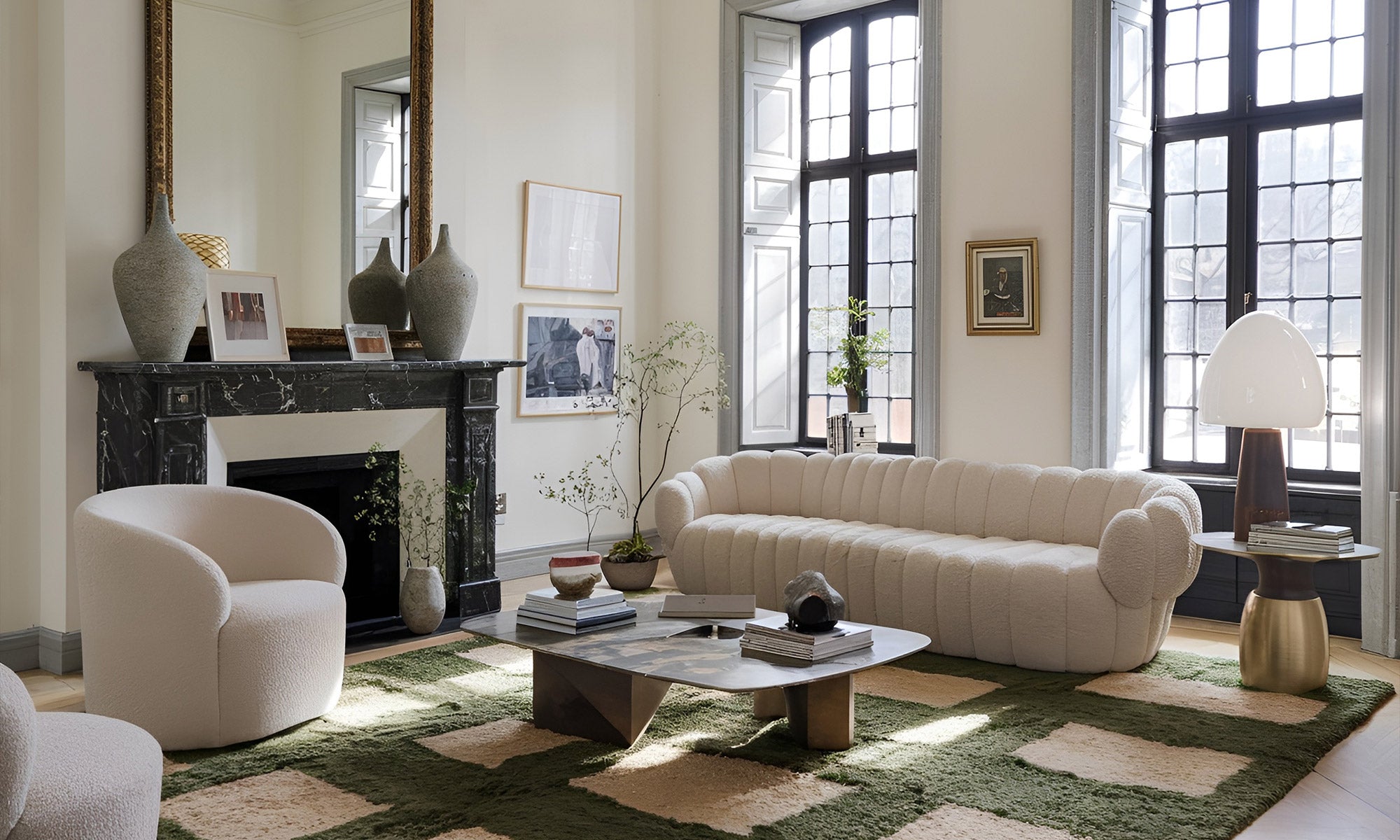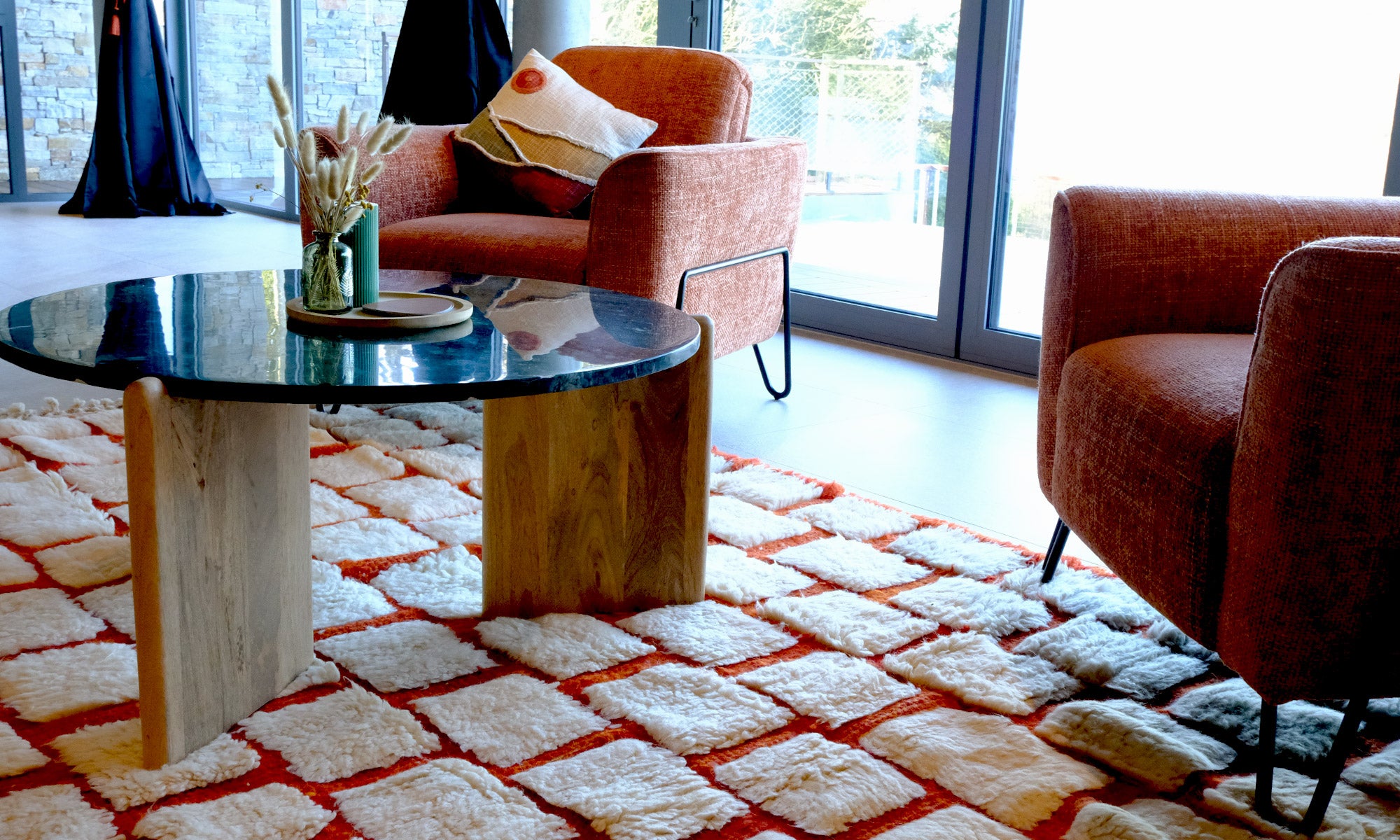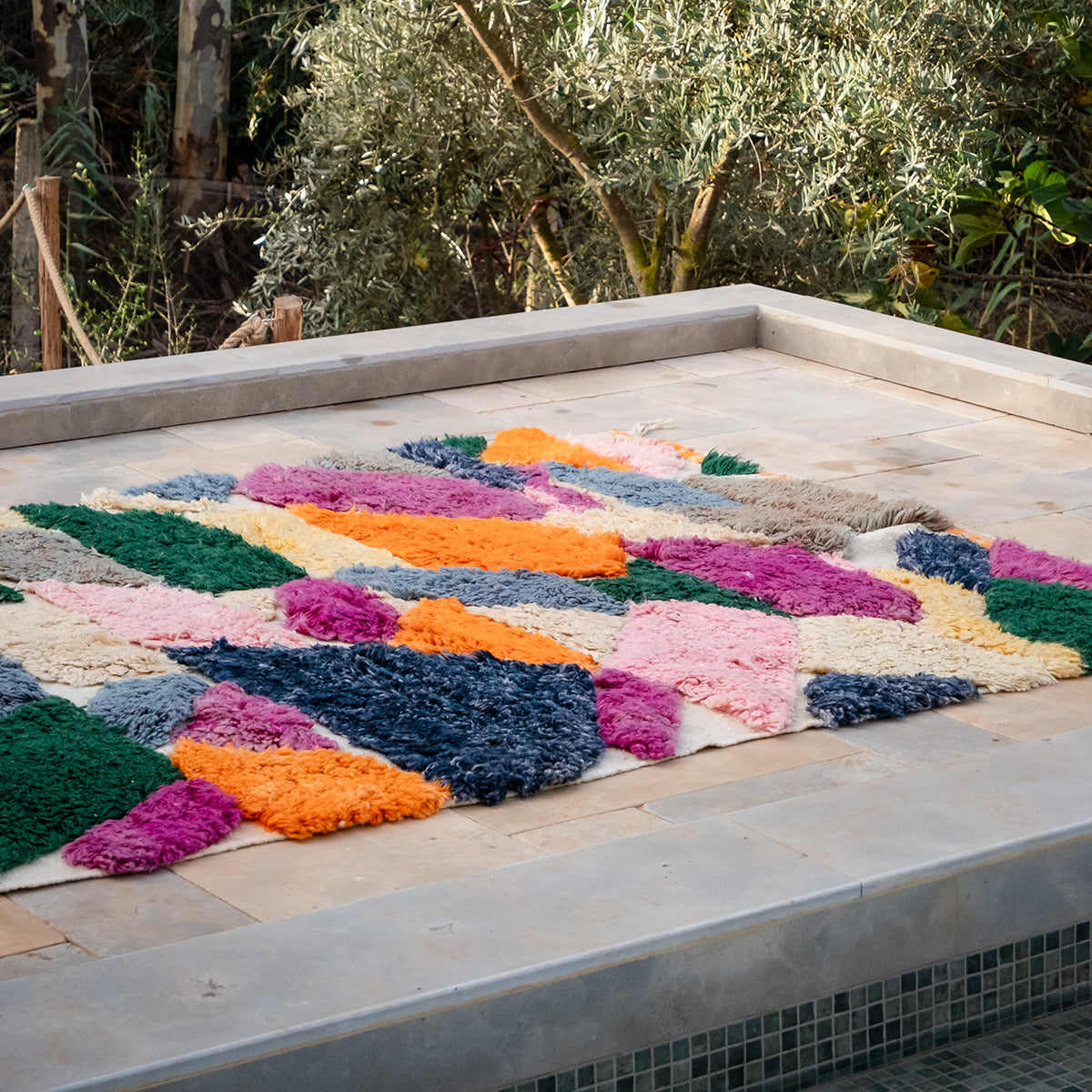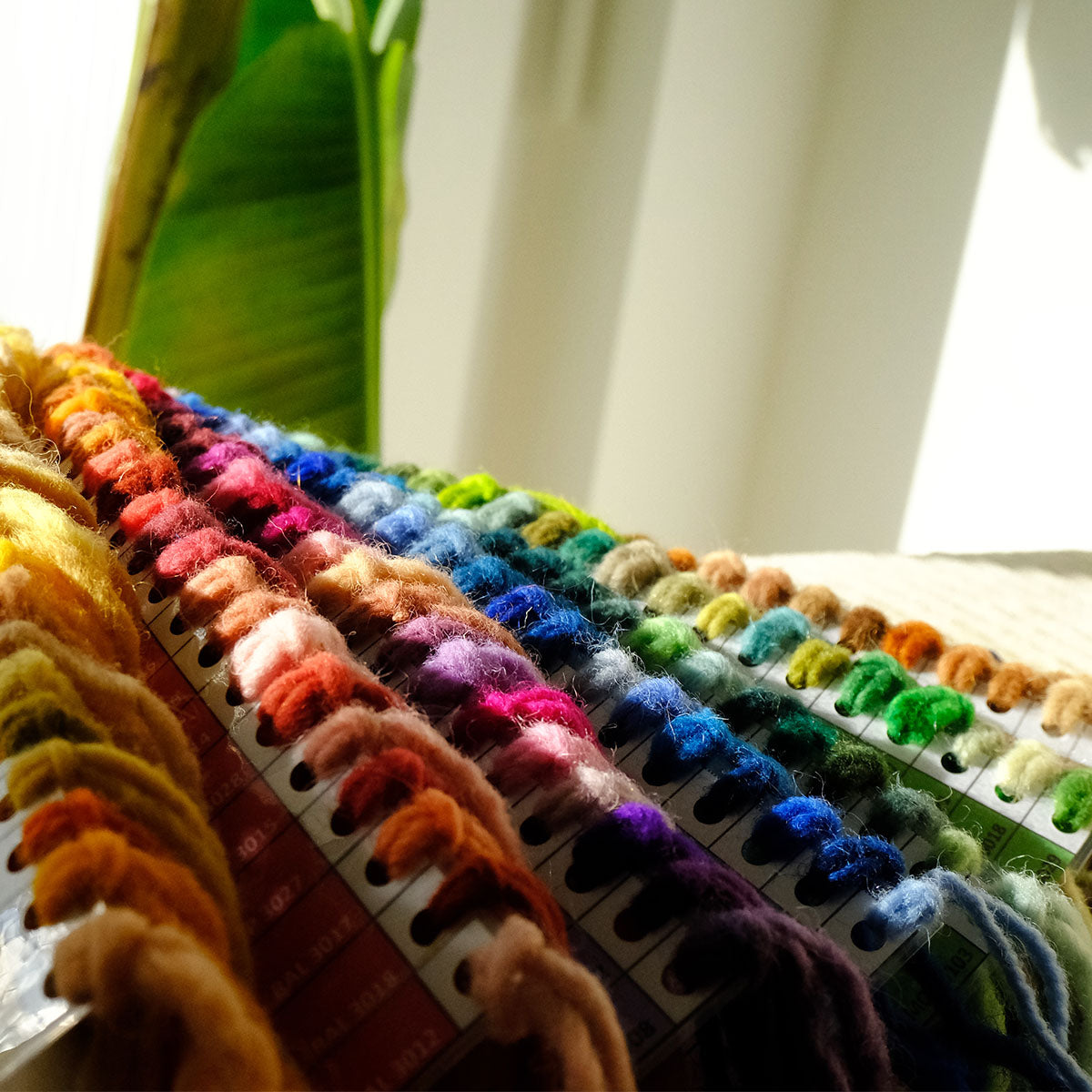A well-chosen rug is more than just a piece of decor—it anchors the space, adds warmth, and brings harmony to a room. Whether you're looking for an authentic Moroccan rug to define your living area or a handwoven Berber runner to soften your hallway, the right size makes all the difference. In this guide, we’ll help you navigate rug dimensions for every space, ensuring your home is both beautiful and well-balanced.
Living Room

Full Coverage
For a unified, cohesive look in your living room, choose a rug that anchors the entire space. It works beautifully when all your furniture, including the sofa, coffee table, and chairs, rest comfortably on the rug. This style is ideal for larger rooms or open-plan layouts, where it helps define different areas without overwhelming the space. To achieve the best effect, place the rug so that it extends slightly beyond the furniture, creating a soft frame that ties the room together.

Partial Coverage
For a modern, airy look, place your rug so only the front legs of your sofa and chairs rest upon it. This arrangement opens up the space while grounding the seating area. Perfect for smaller rooms or minimalist designs, it balances warmth with openness, offering a clean, fresh vibe without overwhelming the space. Ideal for contemporary interiors or when you want to highlight other features of the room.

Floating Rug
A floating rug creates a serene, open atmosphere by positioning the rug in the center of the room, with furniture entirely off it. This layout allows the rug to stand as a statement piece, drawing the eye while maintaining the flow of space. It’s perfect for showcasing intricate designs or bold patterns and works beautifully in larger rooms or open-concept spaces where you want to define areas without limiting movement.
Bedroom

Fully Grounded
For a luxurious, hotel-like feel, place your entire bed (including the nightstands and any bench) entirely on the rug. This creates a rich, grounding presence in the room, making it ideal for larger bedrooms with king-size beds. To achieve the perfect fit, add at least 60 cm (24 inches) to the dimensions of your bed on all sides. This ensures a balanced, harmonious look while giving the room a sense of expansiveness.

Framed Bed
For a balanced and cozy look, opt for Partial Coverage by placing the rug under two-thirds of the bed. The front legs of the bed should sit on the rug, but leave the nightstands off it, allowing them to remain on the floor. To maintain this airy, modern aesthetic, expose about 45 cm (18 inches) of floor space on either side of the rug, leaving the space between the rug and nightstands free of coverage. This layout works wonderfully for both queen and king-size beds, offering a refined and open feel.

Dining Room
For an elegantly grounded dining area, the rug should extend beyond the table, allowing ample space for chairs to remain on it when pulled out. To achieve this, add 60 cm (24 inches) to both the length and width of your table. This would ensure that every chair sits comfortably within the rug’s boundaries, creating a cohesive, well-defined dining space that enhances the room’s flow and visual harmony.

Home Office
For your home office, let the rug embrace your workspace, extending at least 60 cm (24 inches) beyond your desk and chair to create a seamless flow. If you glide through your day in a wheelchair, a flatwoven rug offers effortless movement. For a more stationary, contemplative setting—perhaps a library-inspired nook—a knotted rug brings depth and texture, grounding the space in both elegance and warmth. The right rug doesn’t just define your workspace; it fosters creativity and focus.

Hallway
A hallway rug is more than a passageway accent, it’s a thread that weaves the home together. Stretching elegantly along the corridor, it softens each step and defines the flow of movement. For a well-balanced look, leave at least 10-15 cm (4-6 inches) of bare floor visible on each side. In high-traffic areas, opt for a durable, low-pile or flatwoven rug to ensure longevity, while a hand-knotted runner adds warmth and texture, turning even the simplest hallway into an inviting transition between spaces.




